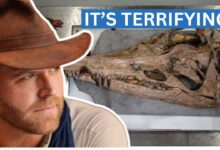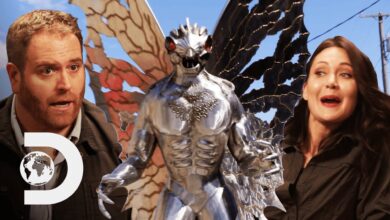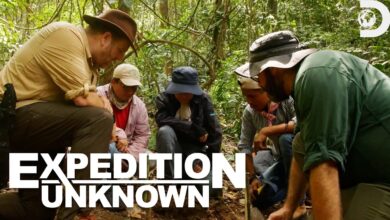Josh Gates Searches for the Vanished White Bird in Maine | Expedition Unknown | Discovery
Josh Gates Searches for the Vanished White Bird in Maine | Expedition Unknown | Discovery

People have been driven mad looking for this
plane.
You think it’s here in Maine?
Definitely.
Definitely in the backcountry of Maine.
I’m joining a pair of veteran wreck chasers
who believe they know where to search for the
white bird, one of the most important lost
planes in history.
Make the case. Why is it here?
Well, it starts with the witnesses.
Wait, there are witnesses?
There are witnesses.
May 9th, 1927.
There were a group of people that heard an
aircraft pass over, which was a very rare
thing in 1927.
People have to remember that in 1927, a plane
goes overhead.
It’s a big deal. It was a big deal.
Right.
So this is a map of the region we’re
in right now.
The first people to hear the aircraft that
morning were the Scotts, a married couple
traveling by car.
They heard an airplane approach.
They pulled over and shut the car off and
got out to listen to it pass by them.
No question. That was a plane. No question.
That was a plane. Okay.
Shortly thereafter, we have the Magoons up
here on their farm who actually saw an
unusual white biplane come out of the fog,
circle their farm once, and then flew off to
the southeast.
And the father was concerned enough after
the plane flew to the southeast that he
organized a search party of neighbors and
went searching in that area where he believed
it had crashed.
I mean, that’s really compelling.
I mean, what other white biplane is flying
around up here in 1927?
Exactly.
And one of the things I’m getting, looking at
all of this, is that there seems to be a
consistency. This plane is flying south.
Yes. Yes.
The Scotts, the Magoons, and other witnesses
all report seeing or hearing a plane moving
in a southwesterly direction.
So, they’re on fumes, came in over Newland.
They’re not going to make New York.
Yeah, they’re not going to make New York.
It’s possible that the first large body of
water that they may have seen to land on
would be Tunk Lake, right behind us.
This is Tunk Lake. This is Tunk.
Lake. Tunk Lake lies in line with the
direction of the aircraft that the witnesses
described. And there’s another reason Peter
and his team have honed in on this location.
Now, I see one other flag on this map.
Yes, down here.
Millet? Yep. James Millet, which is pointing
to this lake?
Yes. So is Millet another eyewitness?
No.
He found something really interesting here
about 30 years later.
What’s Millet’s story?
Millet was with a group of hunters staying at
a camp right here on this lake.
So on one particular day, they go up over a
mountain.
As they descend down the other side, they
decide to stop for lunch.
Millet sees a ledge that looks comfortable
to sit on and he discovers part of an engine
sticking up out of the ground.
He also discovers some pieces of white
canvas.
He discovers a bone that might have been a
human tibia.
Did they note this exact location where this
happened?
They did not.
How do you pick up the pieces?
How do you find where Millet was?
Millet left behind some clues for us.
Okay. What did he leave behind?
When Millet and his hunting partner got to
the top of the mountain, they found a marker
that he said was like a US Geological Survey
benchmark.
These were markers that were put out as part
of topographic surveys.
They’re all over the country these days.
Yes. All right.
And many of the mountains in this area have
coastal survey markers on them.
So, obvious question: Do any of these coastal
markers exist on any of these peaks?
There are two of them on mountains that are
likely suspect.
And so have you searched them?
We searched one of them.
One of them.
And the other? Are you ready for a hike in
the Maine woods?
Hell, yes, I am. Let’s do it.
Come on.
The wreckage spotted by Millet
nearly three-quarters of a century ago was
left behind and has never been found.
If it is airplane wreckage, there’s every
chance it’s from the white bird.
We board a boat and speed across Tunk Lake
toward the peak that may have a geologic
marker matching what Millet described.








